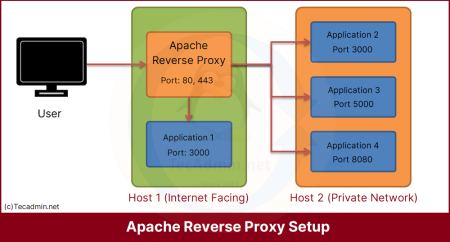Caching is a key way to make your web server work faster. It helps by saving data that gets asked for a lot, so it doesn’t have to be loaded fresh every time. This speeds up your website and lessens the strain on your server.
This article will show you how to set up caching on the Apache HTTP Server. First, let’s learn a bit about Apache and how it handles caching.
Understanding Apache Caching
Apache HTTP Server, usually just called Apache, is one of the most common web servers around. It’s known for being strong, flexible, and compatible with many things.
Apache uses different modules to manage caching, such as:
- mod_cache: The main module for caching.
- mod_cache_disk: Manages storing cache on a disk.
- mod_cache_socache: Manages storing cache in shared objects.
- mod_mem_cache (Deprecated in Apache 2.4): Managed storing cache in memory.
- mod_file_cache: Used for caching common files like HTML pages and images.
We’ll focus on setting up disk-based caching using mod_cache and mod_cache_disk.
Prerequisites
- You need to have Apache HTTP Server installed and running. Check Apache’s official documentation if you need help installing it.
- Know how to edit configuration files using a text editor.
- Have access to the server, either directly or via SSH.
- Have sudo or root permissions.
Step-By-Step Guide to Enable Caching in Apache
Here is the step by step instructions’ to enable caching in Apache web server.
Step 1: Enable Required Apache Modules
First, turn on the caching modules needed for disk-based caching. You can do this with the a2enmod command.
sudo a2enmod cachesudo a2enmod cache_disk
Then, restart the Apache server:
sudo systemctl restart apache2
Step 2: Configure Caching Directives
Now, set up caching in the Apache configuration file. For Ubuntu, you can find it at /etc/apache2/apache2.conf.
sudo nano /etc/apache2/apache2.txt
Add these lines at the end of the file:
<IfModule mod_cache.c>
CacheEnable disk /
CacheRoot "/var/cache/apache2"
CacheDirLevels 2
CacheDirLength 1
</IfModule>
Save your changes and exit the text editor. These settings tell Apache to use disk caching for all URLs. They specify where to store the cache and how to structure the cache directory.
Make sure Apache user has write access to the CacheRoot directory .
Step 3: Restart Apache
Restart Apache to apply your new settings:
sudo systemctl restart apache2
Great job! You’ve set up caching in Apache. You might want to fine-tune these settings or consider setting up a reverse proxy with Apache for even better performance.
Just remember, not everything should be cached. Dynamic content or content that changes often should not be cached to make sure users see the most current data.
Final Words
Apache’s caching features can really boost your web server’s performance. But it’s not right for everything. Always test changes in a controlled environment before making them live. Apache has lots of features, so look at its documentation anytime you’re not sure about something or want to learn more.


